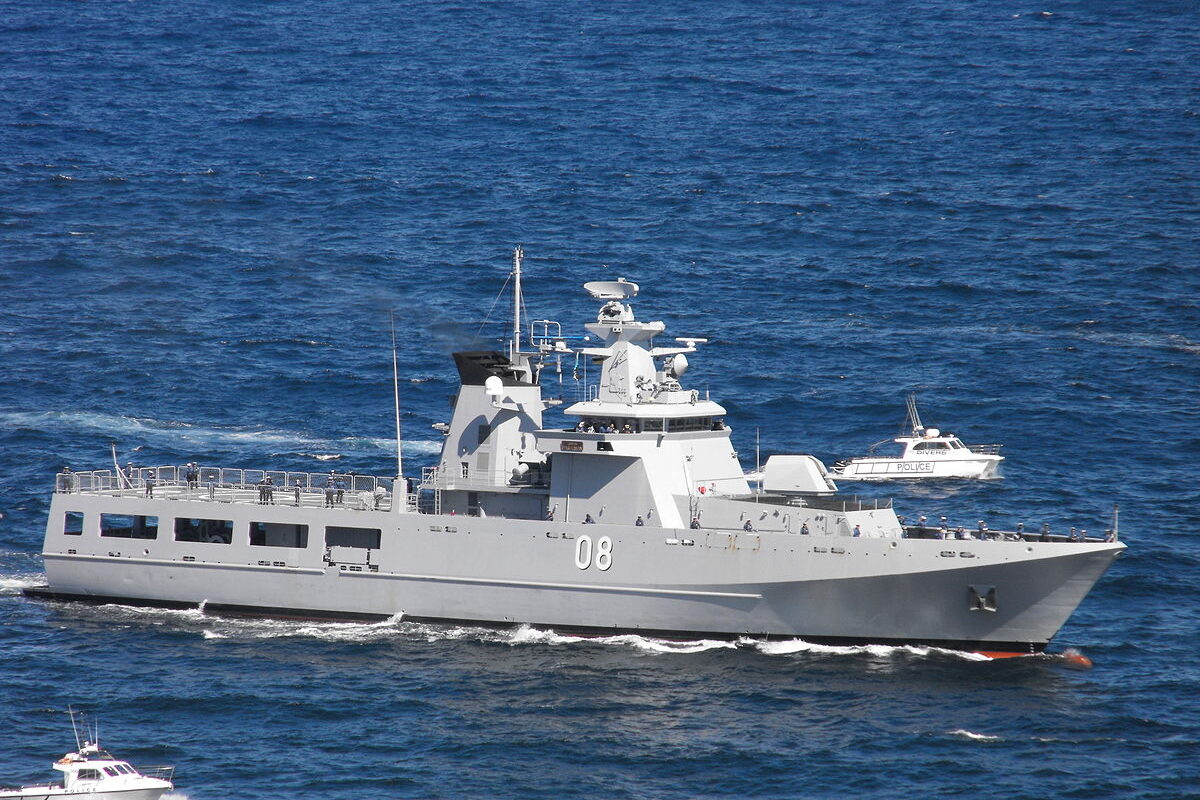Offshore Patrol Vessels, or OPVs, play a crucial role in ensuring maritime security for coastal nations around the world. These multi-purpose vessels are tasked with a variety of missions ranging from search and rescue to maritime law enforcement.
Design and Capabilities
OPVs are designed to operate at extended ranges from shore in ocean and coastal waters. They are typically between 50-500 feet in length with displacement varying from 200-3000 tons depending on their role and capabilities. OPVs are lightly armed and equipped for patrol and surveillance with features like radar, sonar, and maritime patrol aircraft. Modern OPVs have advanced Command, Control, Communications, Computers, Intelligence, Surveillance and Reconnaissance (C4ISR) capabilities. They are manned by a crew of 30-100 personnel depending on size and role.
In terms of capabilities, OPVs are designed to conduct missions like maritime defense, coastal security patrols, fishery protection, anti-smuggling operations, search and rescue, environmental protection and humanitarian assistance. Their equipment allows for monitoring of radio communications, identification of vessels through Automatic Identification System (AIS) and long-range surveillance using electro-optical and infrared sensors. OPVs are also equipped with fast rigid-hulled inflatable boats and light arms which enable them to board and inspect suspect vessels at sea. Modern variants are also equipped with short take-off and landing (STOL) aircraft.
Maritime Law Enforcement
One of the primary roles of Offshore Patrol Vessels is assisting custom and coast guard agencies in maritime law enforcement. They help patrol countries’ exclusive economic zones (EEZs) which extend 200 nautical miles from shorelines. This allows coastal nations to exclusively utilize marine resources and generate economic benefits from activities like fishing and undersea mining. OPVs play a critical part in preventing illegal, unreported and unregulated (IUU) fishing as well as smuggling and other illicit operations in coastal waters.
Their equipment and presence at sea acts as a deterrent while also enabling monitoring of fishing and cargo vessels. Boarded crews can inspect licenses and catch and ensure compliance with regulations. This helps coastal nations protect fishery stocks and the livelihoods of local fishing communities. OPVs are also utilized to interdict smuggling of goods, drugs, arms and people across maritime borders. Overall, they form an important asset for sustainable management of marine resources and security of coastlines.
Search and Rescue
Another key role for OPVs worldwide is search and rescue (SAR) operations at sea. They support coast guards and naval forces in responding to distress alerts from vessels and aircraft in coastal waters and providing emergency assistance. OPVs are equipped with medical facilities, navigational aids and infrastructure to embark survivors and render initial aid. Their endurance also allows sustained SAR operations over extended durations, sometimes even during adverse weather. Modern OPVs have advanced C4ISR and sensors to efficiently coordinate and conduct SAR missions.
Overall, OPVs minimize response times and facilitate saving of lives during emergencies at sea. Their presence provides an added layer of safety and security for maritime traffic traversing coastal waters. Nations worldwide have significantly bolstered their OPV fleets in recent decades to strengthen SAR capabilities near shorelines with growing maritime traffic and coastal developments.
Fishery Management and Protection
Globally, over 800 million people depend on fisheries and aquaculture for their livelihoods. However, IUU fishing continues posing threats due to lack of effective monitoring and enforcement especially in coastal waters. This issue can seriously undermine fishery stocks and economies dependent on marine resources. OPVs play an indispensable role in assisting nations’ fishery departments and enforcement agencies to combat IUU fishing.
Their long endurance enables sustained patrols of vast coastal EEZs, which is crucial for monitoring fishing activities. OPVs can inspect catch and licenses of local and foreign fishing vessels. Their sensors and surveillance systems help detect any illegal activities. If required, ships or fishing boats partaking in IUU fishing can be apprehended. OPVs also deliver early warnings to Artisanal fishing communities about approaching storms or regulated fishing zones using communications systems.
Overall, regular OPV patrols act as a strong deterrent due to risk of detection and penalties. This protects fishing stocks from over-exploitation and ensures sustainable yields. It also safeguards livelihoods of millions dependent on fisheries globally. Advanced C4SIR technologies continue enhancing OPVs’ effectiveness in this role. With growing maritime interests, most nations are expanding their fleets to strengthen fishery surveillance and management capabilities.
Coastal Security and Defense
A key aspect of OPVs is their role in bolstering coastal naval capabilities and safeguarding strategic maritime interests. Their flexible nature allows for multiple roles including offshore defense, maritime interdiction, coastal patrols and electronic intelligence gathering. Modern OPVs are equipped with weapons like guns, missiles and electronic warfare systems enabling them to engage threats at extended ranges from shore.
OPV fleets significantly augment navies’ presence and endurance in coastal waters. Their sensors and aviation facilities help boost situational awareness along coastlines. Being lightly armed, OPVs are employed for missions that do not require capital ships while freeing up larger naval assets. They also enable quick deployment of forces to developing security situations. OPVs conduct regular drills with other maritime forces to hone interoperability.
During times of conflict or skirmishes, OPVs bolster coastal security through patrols, border monitoring and area denial. They are also equipped for missions like search & attack along with surveillance and electronic intelligence gathering roles. With advanced command and control systems integrated with naval C4ISR networks, OPVs act as force multipliers improving response times and coordination in coastal waters.
The Expanding Role of OPVs
Over the decades, the nature and scale of threats in maritime domains have grown considerably. From IUU fishing, drug and human trafficking to piracy, terrorism and other non-traditional security issues, coastal nations now require broad-spectrum maritime security and response capabilities. Simultaneously, OPVs have also evolved from basic patrol units to multi-mission platforms.
Modern OPVs feature more advanced weapons, sensors and modular payloads allowing swifter transitions between roles. Their aviation facilities enable on-board unmanned aerial systems and helicopters extending seaward reach. Integrated command systems impart
*Note:
1. Source: Coherent Market Insights, Public sources, Desk research
2. We have leveraged AI tools to mine information and compile it
About Author - Money Singh
Money Singh is a seasoned content writer with over four years of experience in the market research sector. Her expertise spans various industries, including food and beverages, biotechnology, chemicals and materials, defense and aerospace, consumer goods, etc. LinkedIn Profile

 by
by 


